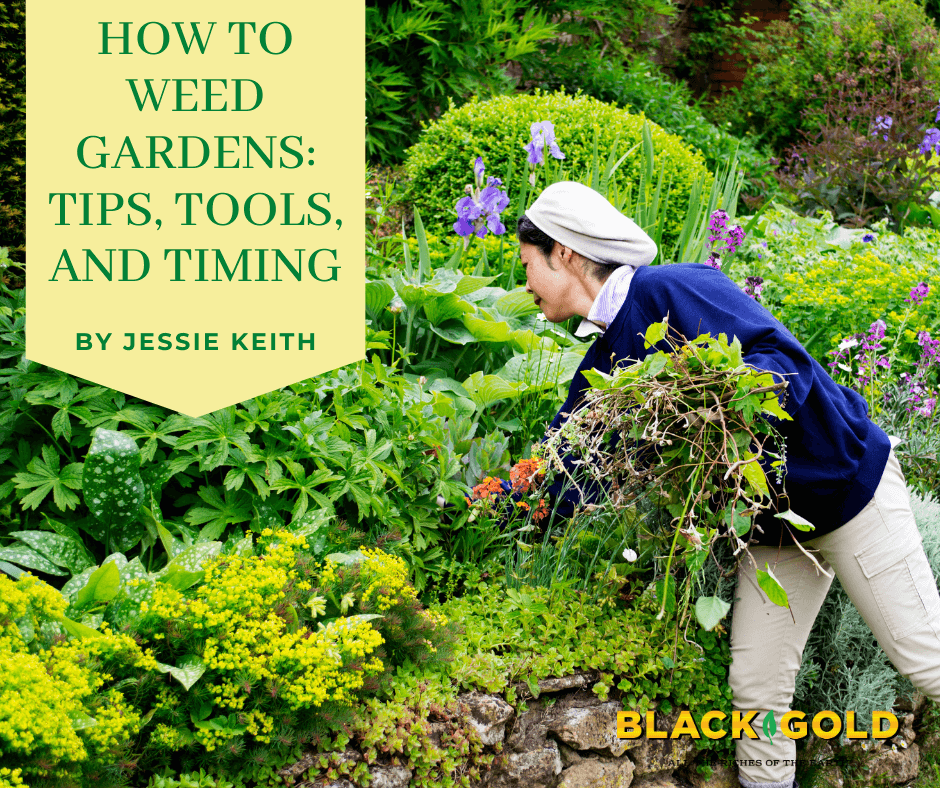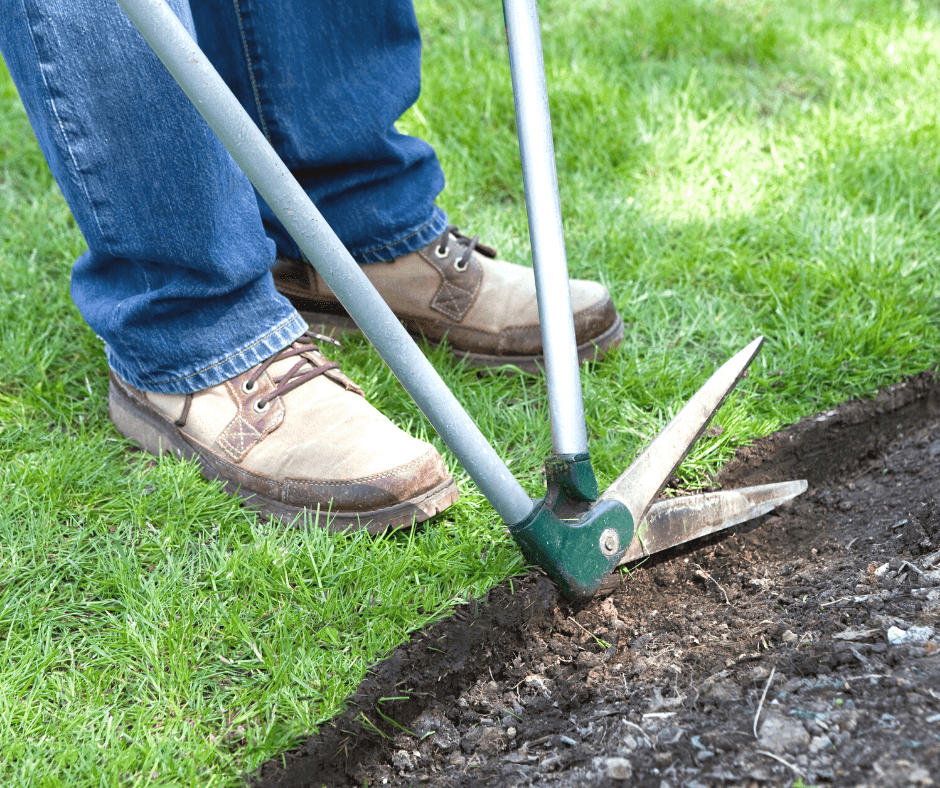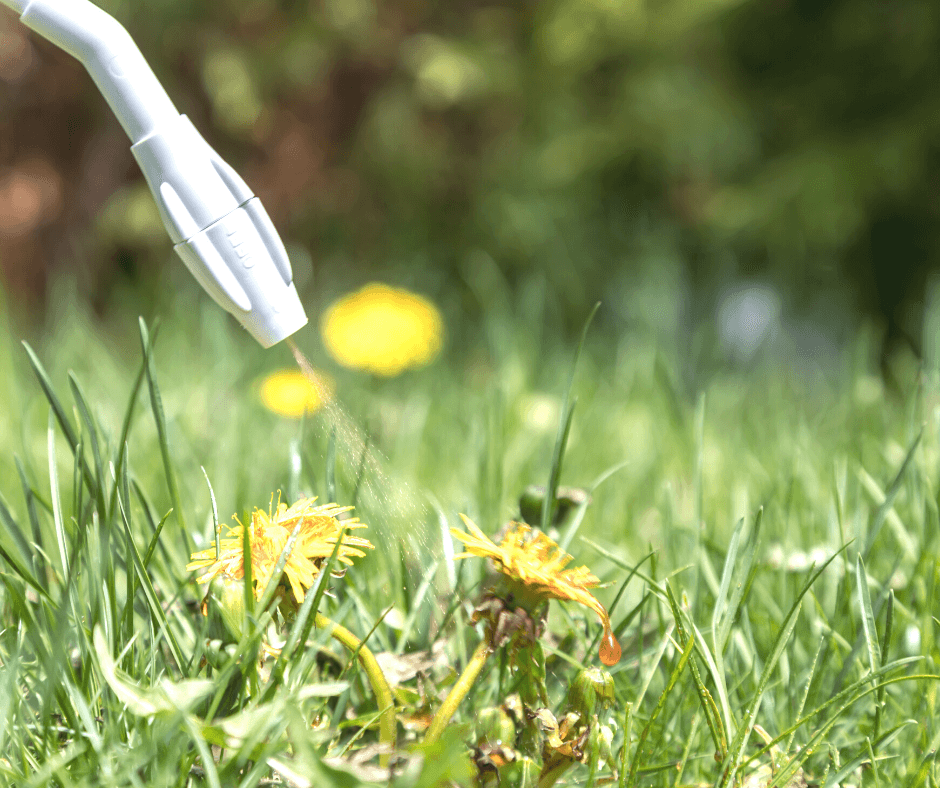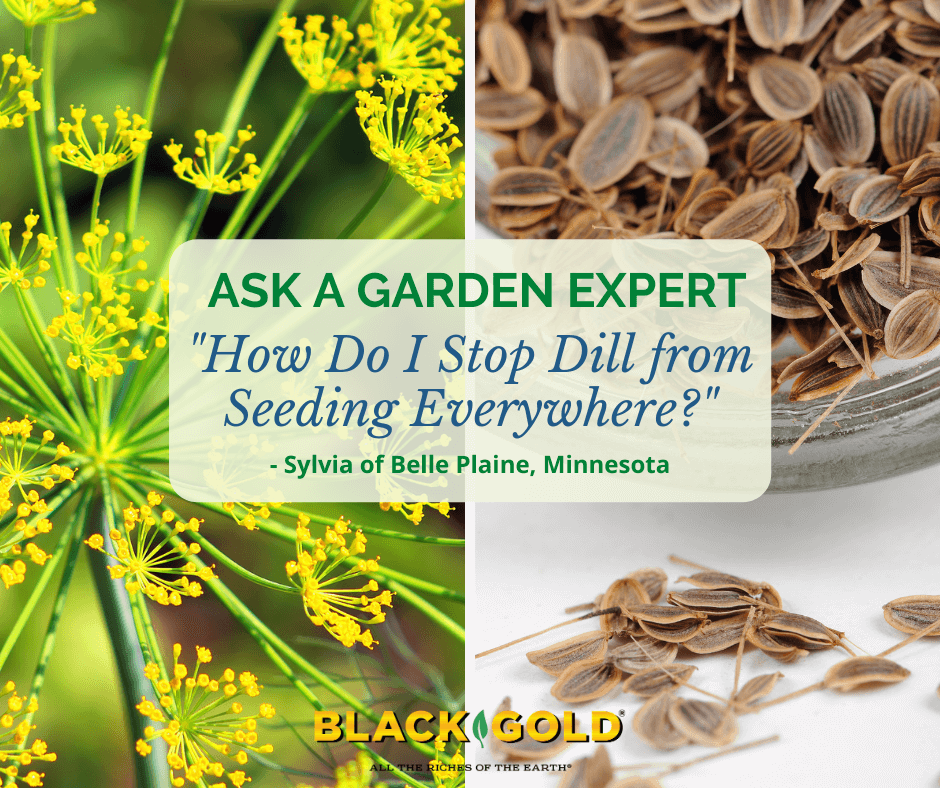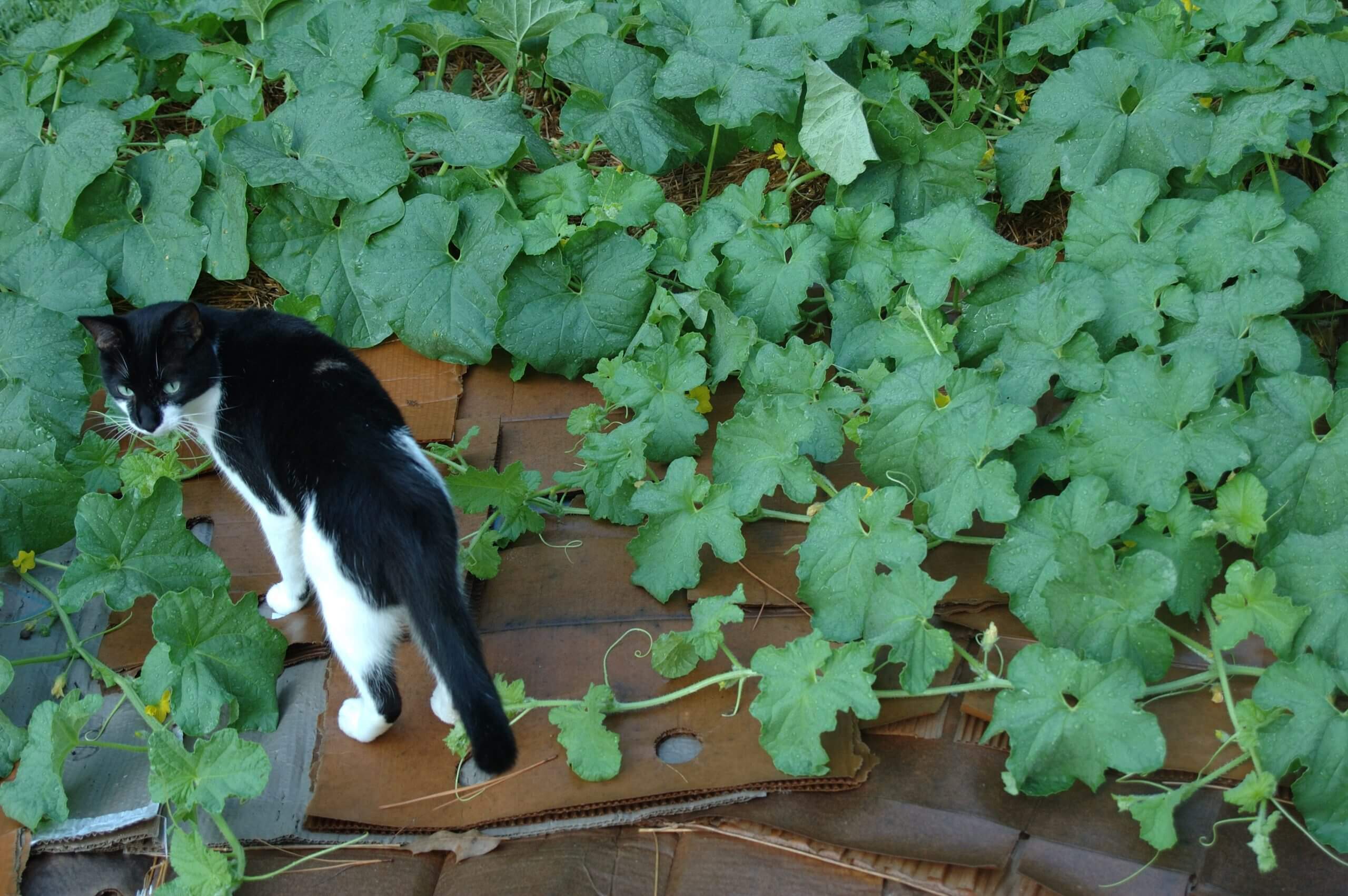Weed competition drags gardens down in every way. Ignore your garden for just a couple of weeks, and weeds can take over in a flash–turning once tidy, pretty beds into a tangled mess of green interlopers with no room to spare. If you use the right tools, techniques, and timing necessary to stop a weed takeover, it will save you trouble and reward you with bountiful flowers, vegetables, and fruits.
Common, aggressive garden weeds spread by many means. If allowed to set seed, they will pepper the garden ground with loads of obnoxious seedlings crying to be hoed away. Some have the deepest, most far-spreading root systems that will get away from a gardener in no time if allowed to take hold. Different weeds appear at different times of the season. The most unexpected are prolific winter weeds that will happily fill your beds in late winter and set seed by late spring. Summer weeds require heat to germinate, so you can expect them to start popping up as soon as the weather becomes truly beautiful.
Knowledge is power when it comes to weeds. Here are the essentials necessary to keep your beds happy and weed-free throughout the year.
Know Your Weeds and Their Spreading Power

Your worst weed enemies are perennial weeds that are deep-rooted, fast-spreading, and produce generous amounts of seeds that spread and sprout quickly. Annual weeds are also pesky, but they are generally more shallow-rooted and easier to kill by quick digging and hoeing before they set seed. Here are five of the worst perennial weeds that you may face. From there, I recommend relying on the helpful, Farmer’s Almanac Common Weed List, as well as the excellent UC Davis IPM Guide for common weeds.
Worst Perennial Weeds
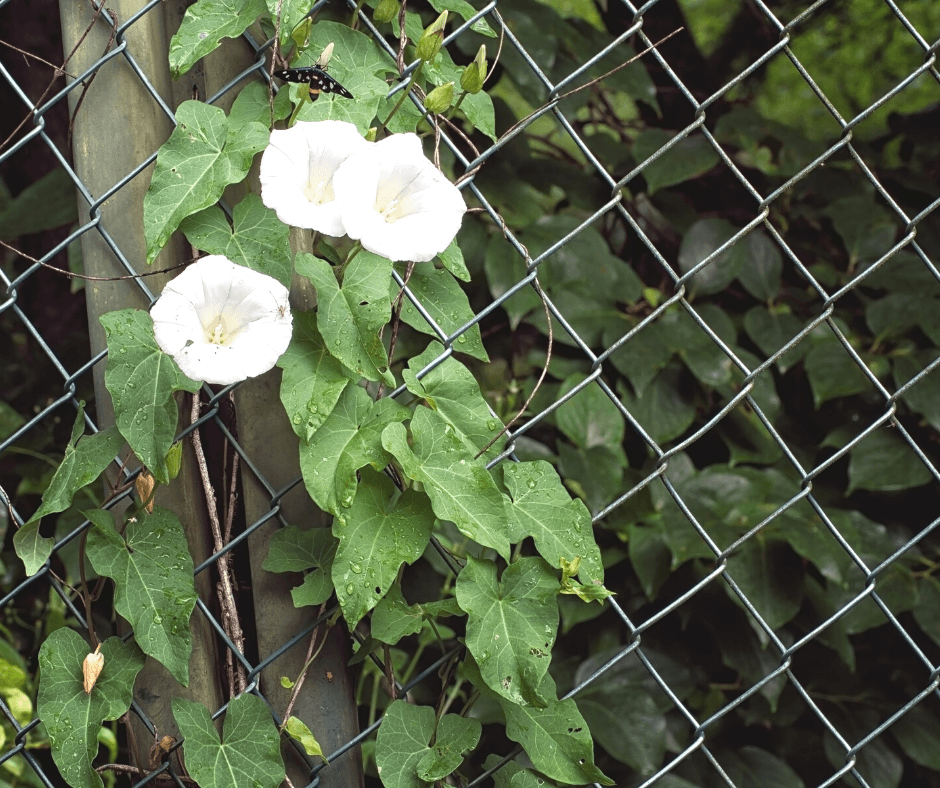 Field Bindweed (Convolvulus arvensis): Here is a real monster of a spreader that’s hard to remove. The hardy perennial sets fleshy rhizomatous roots that can extend deep into the ground and many feet from the parent plant. The vine twines and strangles garden plants and then becomes covered with little, white, morning-glory-like flowers that set hundreds if not thousands of seeds. Scrape and dig the seedlings on-site and try to dig the root systems as soon as possible. Smothering and covering infested areas is also a good method, but it takes time. (Click here to learn more about bindweed removal.)
Field Bindweed (Convolvulus arvensis): Here is a real monster of a spreader that’s hard to remove. The hardy perennial sets fleshy rhizomatous roots that can extend deep into the ground and many feet from the parent plant. The vine twines and strangles garden plants and then becomes covered with little, white, morning-glory-like flowers that set hundreds if not thousands of seeds. Scrape and dig the seedlings on-site and try to dig the root systems as soon as possible. Smothering and covering infested areas is also a good method, but it takes time. (Click here to learn more about bindweed removal.)
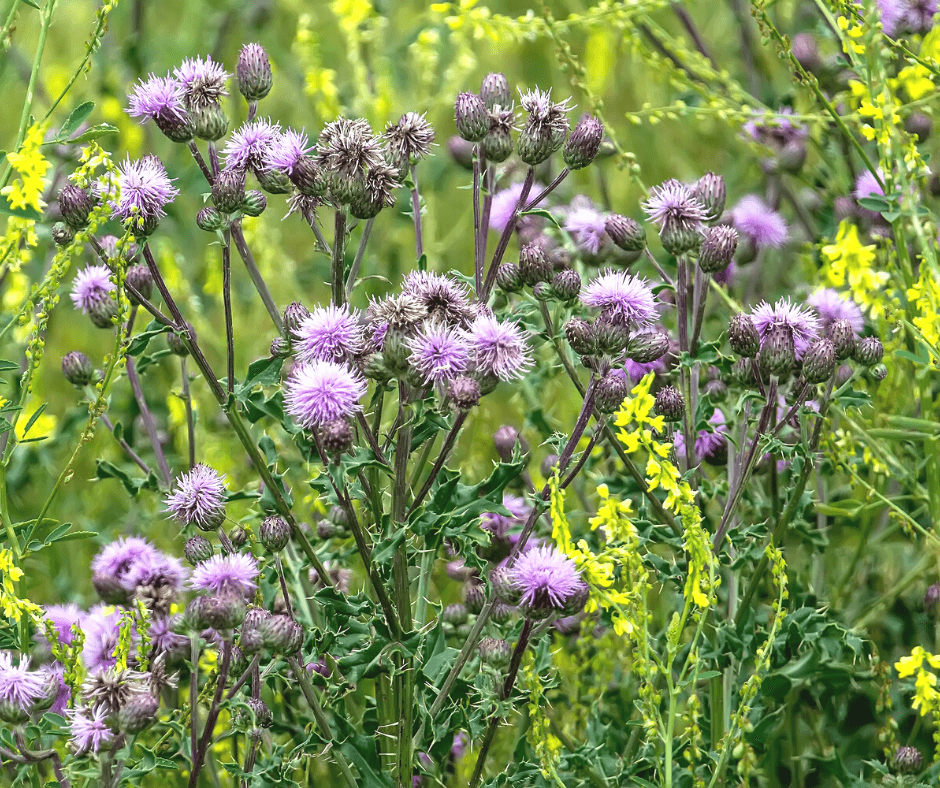 Canada Thistle (Cirsium arvense): Canada thistle (Cirsium arvense) is notoriously difficult to remove and is also a notorious spreader. Its leaves and stems are painfully prickly, and pollinated summer flowers produce loads of puffy seeds that get caught in the wind and spread everywhere. (Don’t let this go to seed anywhere near your yard or garden!) When they sprout, a single plant can become a dense colony connected by deep, rooting rhizomes that are impossible to dig out. Leave just one piece, and it will return. It is also resistant to all but the strongest herbicides.
Canada Thistle (Cirsium arvense): Canada thistle (Cirsium arvense) is notoriously difficult to remove and is also a notorious spreader. Its leaves and stems are painfully prickly, and pollinated summer flowers produce loads of puffy seeds that get caught in the wind and spread everywhere. (Don’t let this go to seed anywhere near your yard or garden!) When they sprout, a single plant can become a dense colony connected by deep, rooting rhizomes that are impossible to dig out. Leave just one piece, and it will return. It is also resistant to all but the strongest herbicides.
Aside from using commercial-grade herbicides, the second-best method is to smother plants with weed cloth and mulch until they are gone. Watch out for plants that creep into the grass, once they do, a good broadleaf herbicide is your only option, unless you want to kill everything and start over.
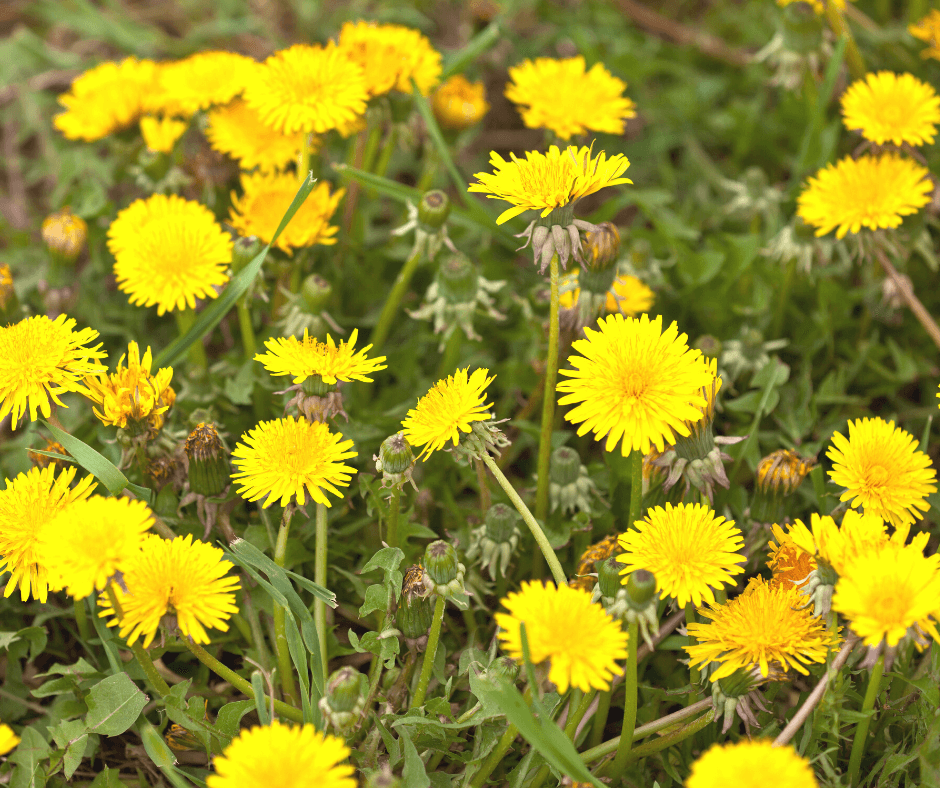 Dandelion (Taraxicum tomentosum): Dandelions spread by seed but can be tamed, so I don’t mind them growing in the lawn. Bees and other early pollinators rely on their golden flowers for pollen and nectar, so they do some good, but they have no place in my garden where they compete with other garden flowers. The deep-rooted perennials are easy to grub out with a garden knife, as long as you remove the whole root and leave no pieces behind. The key is keeping them from setting seed. This is the source of dandelions in the garden. In the spring months, I try to mow low and often to chop off the seed heads before they release their seeds.
Dandelion (Taraxicum tomentosum): Dandelions spread by seed but can be tamed, so I don’t mind them growing in the lawn. Bees and other early pollinators rely on their golden flowers for pollen and nectar, so they do some good, but they have no place in my garden where they compete with other garden flowers. The deep-rooted perennials are easy to grub out with a garden knife, as long as you remove the whole root and leave no pieces behind. The key is keeping them from setting seed. This is the source of dandelions in the garden. In the spring months, I try to mow low and often to chop off the seed heads before they release their seeds.
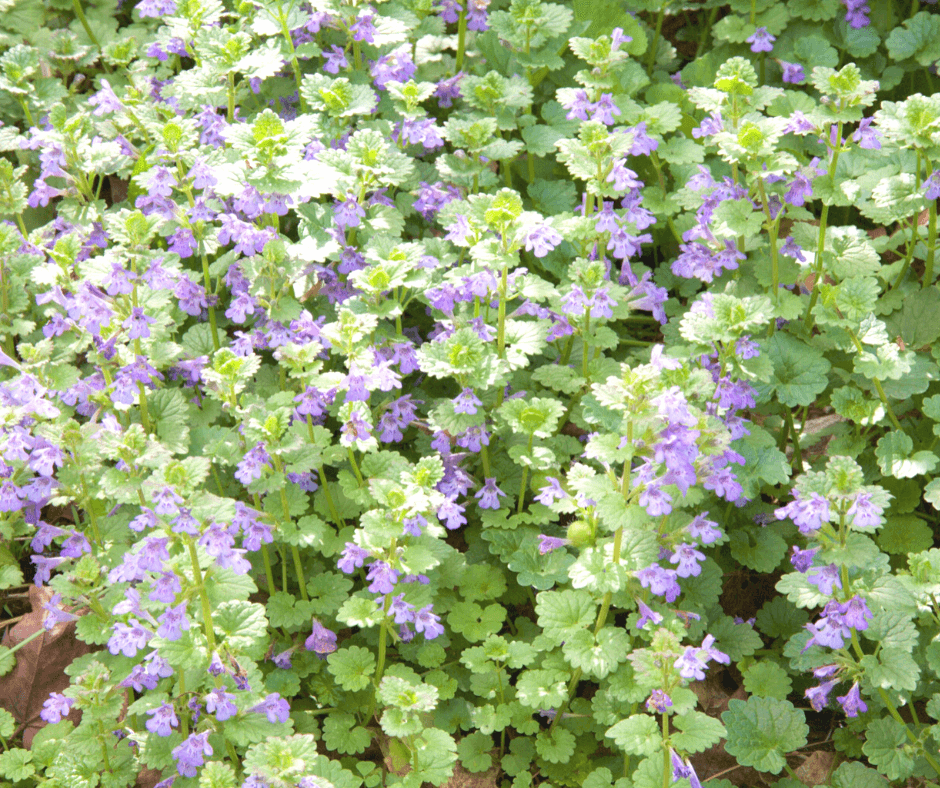 Ground ivy (Glechoma hederacea): The aggressive member of the mint family is a ground-covering weed with creeping stems that root and spread fast. Its spring flowers set lots of seeds, which sprout quickly. It also thrives in lawns, so you will need to rely on a broadleaf herbicide for the lawn if you want to truly get rid of it.
Ground ivy (Glechoma hederacea): The aggressive member of the mint family is a ground-covering weed with creeping stems that root and spread fast. Its spring flowers set lots of seeds, which sprout quickly. It also thrives in lawns, so you will need to rely on a broadleaf herbicide for the lawn if you want to truly get rid of it.
Thankfully, this weed is relatively easy to pull, but if you leave even the tiniest piece in the ground it will root and regrow. T manage it well, remove it from garden beds first thing every spring, and then apply a 3-inch layer of mulch, being sure to leave the crowns of garden perennials uncovered. If stray pieces emerge from the mulch, pull them on site.
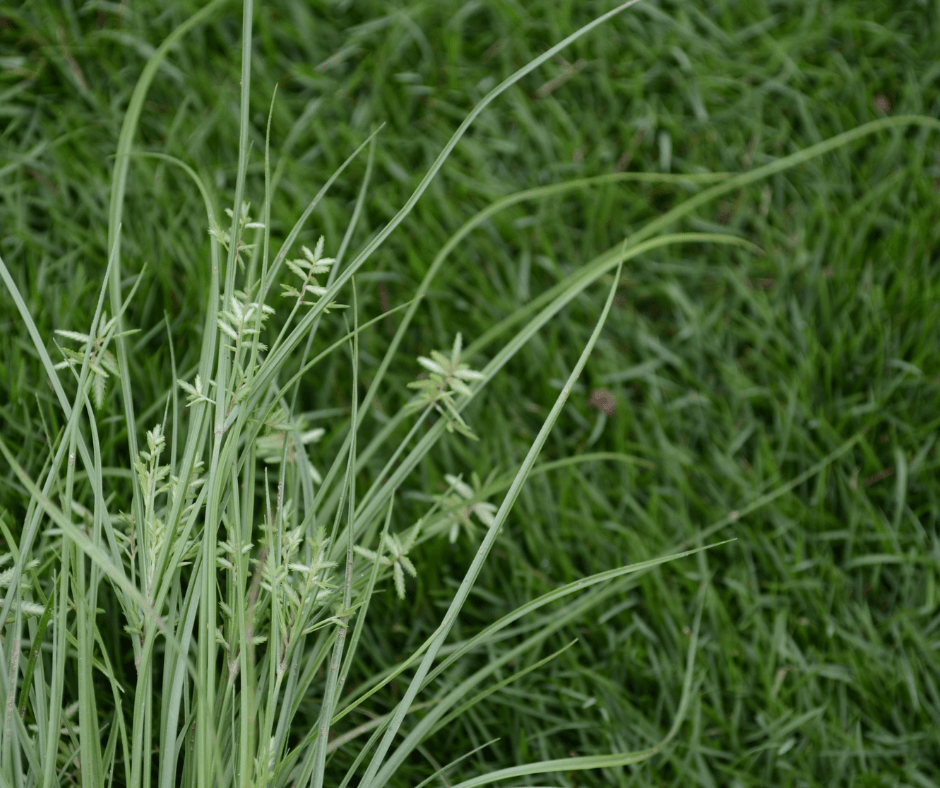 Nutsedge (Cyperus esculentus): Unless you live in the desert, your garden has likely experienced nutsedge. The aggressive, moisture-loving sedge produces copious seeds in summer that sprout everywhere. Even worst, the plants have fine, spreading roots that develop small, brown nutlet tubers. Leave one tuber in the ground, and it will sprout into a whole new plant. (Quirky fact: The tasty nutlets can be harvested and eaten.)
Nutsedge (Cyperus esculentus): Unless you live in the desert, your garden has likely experienced nutsedge. The aggressive, moisture-loving sedge produces copious seeds in summer that sprout everywhere. Even worst, the plants have fine, spreading roots that develop small, brown nutlet tubers. Leave one tuber in the ground, and it will sprout into a whole new plant. (Quirky fact: The tasty nutlets can be harvested and eaten.)
Nutsedge is not herbicide-resistant, but its tubers are resistant. For this reason, dig out the plants rather than just pulling or spraying them and get all of the tubers. Finally, cover with a 3-inch layer of mulch, and diligently pull any small sedge sprouts as you see them. (Click here to learn everything that you need to know about removing nutsedge.)
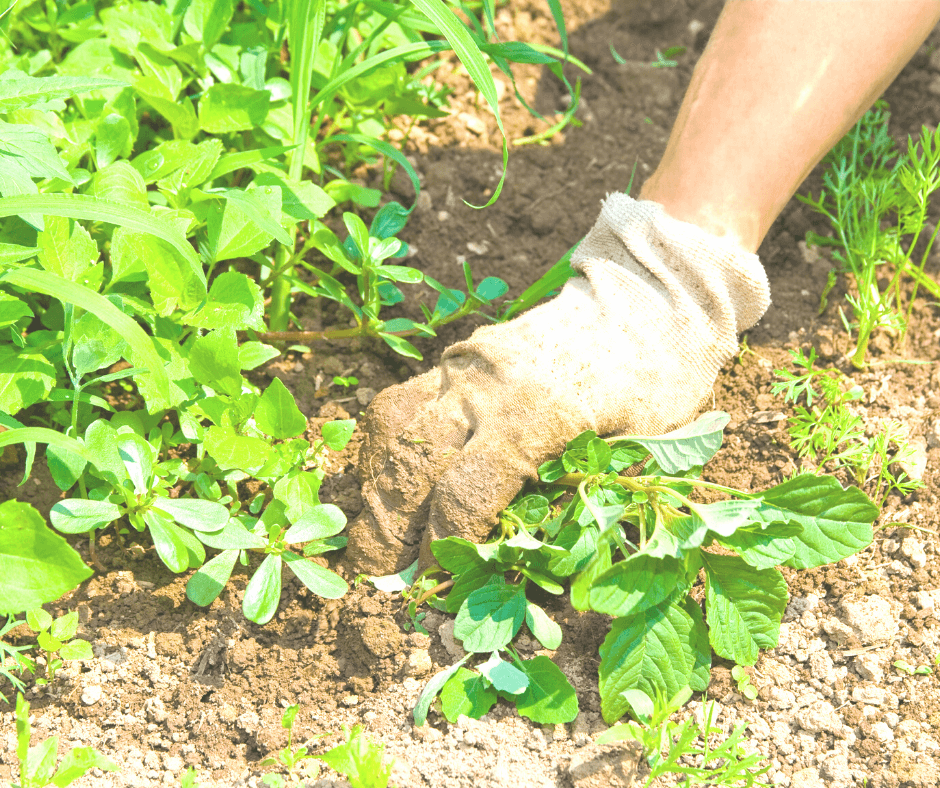
All of these weeds require good tools for thorough removal, followed up by mulch, and often herbicides or other harsher measures. Once again, annual weeds, like winter chickweed, summer purslane, pigweed, or spotted sandmat euphorbia, are very easy to dig and pull. The key is removing them before they can set seed and germinate or add to your garden’s soil weed seed bank.
Know Your Weeding Tools
Over the years I have used a number of different weeding tools. A few have stood out and become fast favorites. The three key characteristics I look for in a good gardening hand tool are 1. ease of use, 2. working power, and 3. durability. These criteria are met by the following tools:
Long-Handled Tools
Prohoe Rogue Do It All Tool and 7-inch Hoe: The hoes made by this company are wonderfully sturdy and well-made, razor-sharp, and long-handled for those of us that do not like to bend. The Do It All Tool is triangular on one side and has a raking tool on the other. It is perfect for rogueing our deep-rooted weeds. The thin, 7-inch Pro Hoe is ideal for scratching up mats of shallow weed seedlings. These hoes are so strong and sharp, the job will get done in an instant.
Pullerbear Uprooter: For big “weeds” choose a Pullerbear uprooter. In a matter of minutes, an area riddled with small weed trees can be cleaned beautifully roots and all. It works like no other tool I’ve tried. Just clench the base of the sapling or small tree and pull. Ignore the fact that it’s a bit pricey. It will pay for itself quickly in time and effort saved wrangling with hard-to-pull woody weeds.
Short-Handled Tools
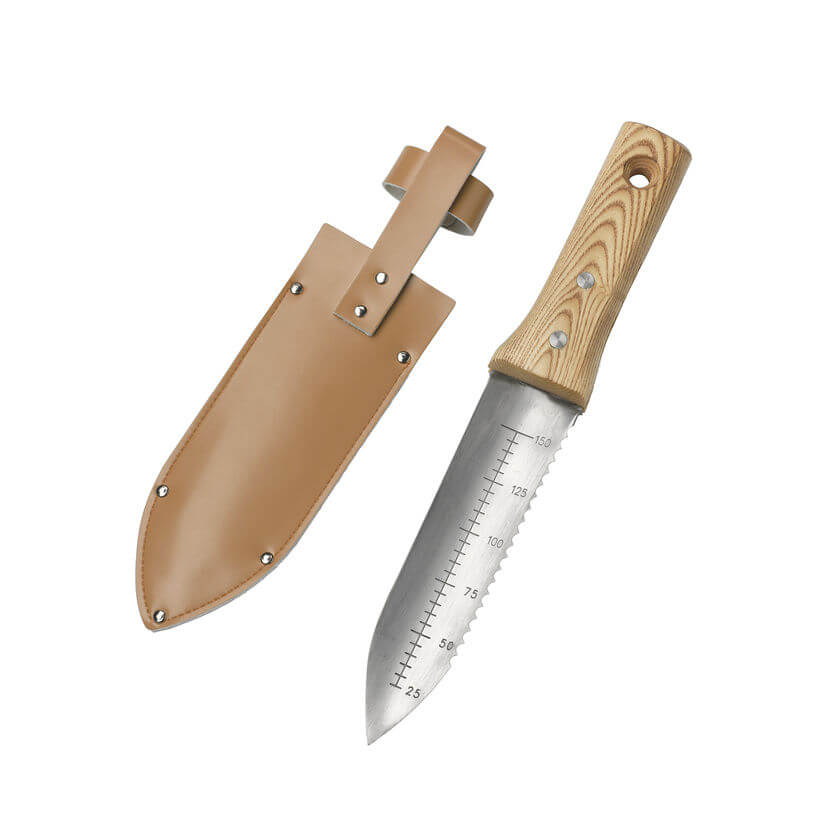
My trust garden knife (also called a soil knife or Japanese hori-hori) goes with me everywhere. It can cut into the soil to deep roots below and saw through the roots or bases of tough plants. I even use it for harvesting greens and cole crops. One side of the knife is sharp for slicing, and the other is serrated for sawing. They can easily break through the skin, so I use mine while wearing garden gloves and I store it in a leather belt sheath.
Fine-bladed hand trowels are excellent all-purpose tools for weeding and planting. They quickly cut at deep or shallow roots in no time and withstand lots of wear and tear if made well. The “rockery hand trowel” at Clarington Forge is just such a fine-bladed tool, and it’s beautifully crafted for the long haul. Its fine blade makes for easy weeding and planting–especially in heavier or pebbly soils. The narrow rockery hand trowel from Clarington Forge easily expels weeds and gets into small spaces. (image care of Clarington Forge)

For super fast hand weeding nothing beats the classic ho-mi (hoe-mee), also called the Korean hand plow or cultivator. This sharp, downward-facing tool can get to the base of a dandelion root in seconds with a quick chop, chop, chop. Nothing is more effective. For smaller weeds, I use the side of the ho-mi to scratch and smooth the soil. It’s an excellent tool for lightly aerating the base of a plant or getting to the root of a tough herbaceous weed as well as planting new plugs. If well cared for, a ho-mi will last forever (if cleaned after use and oiled to prevent rust). It’s relatively cheap, too. Long-handled versions are also very useful. Just be careful when chopping away with this sharp tool. Its tip can be nasty.
Practice Timely Weeding
I weed two ways be either casually weeding as I water, harvest, and enjoy my garden, or intensively bed by bed. I do casual weeding almost daily. More intensive weeding is something I do three times a month in summer. I also try to catch weeds at various times in their life cycles.
- Catching weeds before they flower and set seed is timely weeding. I write this article as the winter weeds in my vegetable garden have begun to set seed. A busy spring pushed back my weeding schedule, and I am paying for it. Had I removed these weeds just two weeks earlier, before they had begun to release seeds,
- Catching weed seedlings before they become large is timely weeding. Digging or hoeing up weed seedlings before they become large and take hold will make your garden life so much easier.
- Smothering beds before seeds sprout is timely weeding. Adding mulch in late winter or spring, before weed seeds really sprout is very important to keeping weeds down. Miss just one year, and you will pay for it.
Mulch Properly
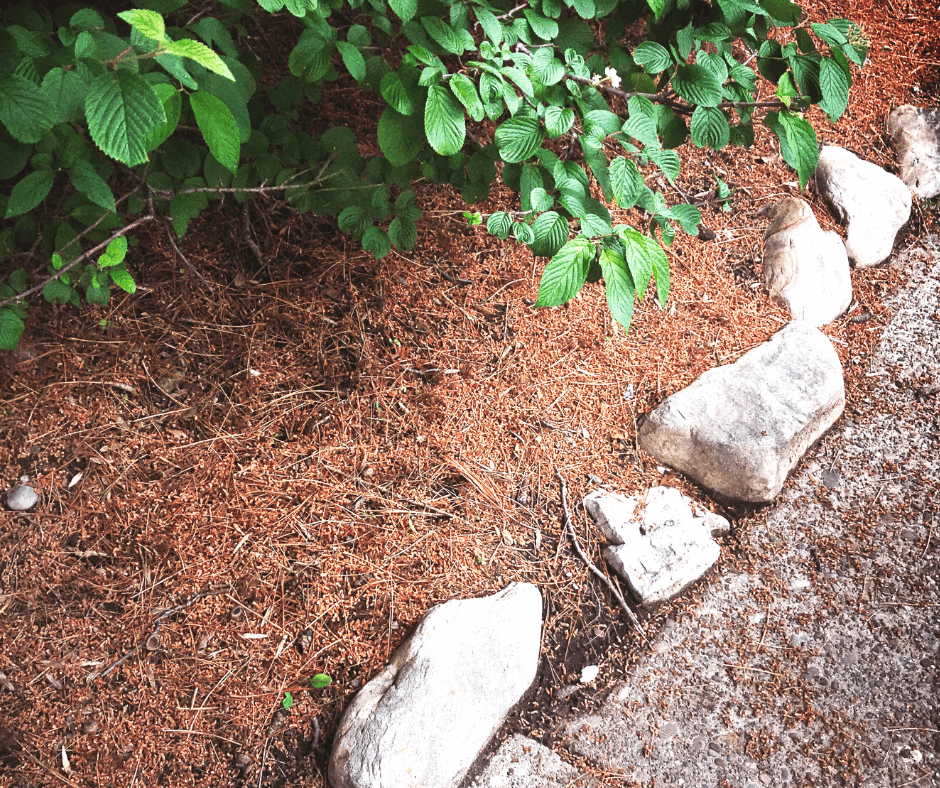
A 2-3-inch layer of mulch, straw, leaf-mulch or compost keeps seedlings from germinating and stops weeds from taking over. It is best to apply mulch in spring after properly weeding your beds and again in fall to ward off winter weeds. (Click here to learn more about the many wonderful mulch options.)
Edge Your Beds
Lots of lawn grasses and weeds like to creep into garden beds. Once in your garden, they become weeds. To stop this, it helps to edge your gardens, especially at the start of the gardening season. Edged beds also look tidier and nicer. Mowing your lawn regularly to stop weeds from flowering and setting seeds is also advisable. (Click here for a tutorial about how to edge beds.)
Consider Solarization
Soil polarization is a method of weed removal that relies on the heat of the sun to kill weeds en masse. Methods vary, but in general, it involves covering a bed area with tacked-down sheets of clear or black plastic for several weeks during the summer. When it works, the heat generated heat cooks everything below–plants, seeds, and all. Keep in mind, the method is used to revive whole beds and remove all weeds, so no desirable plants can be present. It is also less effective further north where summer temperatures rarely exceed 90 degrees F.
Use Herbicides as a Last Resort
Herbicides that really work are generally toxic and best applied by garden professionals. If you have a severe problem with one of the worst perennial weeds mentioned, like Canada thistle or field bindweed, then you may consider resorting to a professional-grade herbicide very selectively applied by a trained horticulturist. Otherwise, they are not needed. More natural means of weed removal are safer and better.
Stay on top of your weeds, and your gardens will prosper. Put aside just a little time each week and it will be a small burden to bear.


